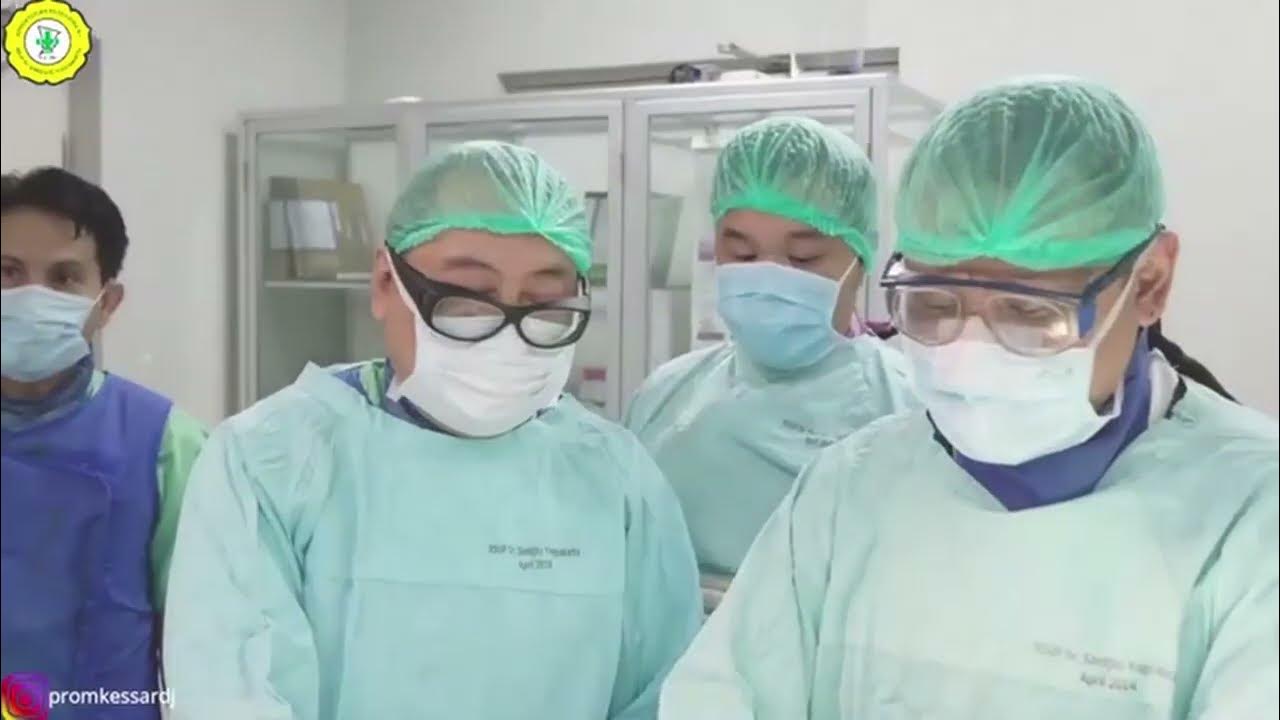Cases in Radiology: Episode 4 (musculoskeletal, MRI, x-ray)
Summary
TLDRThis 'Cases in Radiology' episode explores an MRI of a knee with an acute injury in a 25-year-old male. The case reveals a complete tear of the anterior cruciate ligament (ACL), an intact posterior cruciate ligament, and a high-grade tear of the medial collateral ligament. It also discusses associated meniscal tears, including a discontinuous bucket handle tear of the medial meniscus and a small displaced fragment in the lateral meniscus. The video highlights the importance of identifying these injuries for orthopedic surgeons, as well as the assessment of cartilage, bone, and posterolateral corner structures, with a mention of the Segond fracture's association with ACL injuries.
Takeaways
- 🔍 The MRI case study involves a 25-year-old male with an acute knee injury.
- 🏥 The case was prepared with the assistance of Associate Professor David Connell.
- 💥 The primary abnormality identified is a complete tear of the anterior cruciate ligament (ACL).
- 🔄 The posterior cruciate ligament (PCL) is intact, in contrast to the ACL.
- 📏 The patient exhibits signs of ACL laxity, including anterior tibial translation measuring up to 10mm instead of the normal 4mm.
- 🔍 The lateral meniscus shows signs of uncovering at the posterior horn.
- 🤕 There is a high-grade or almost complete tear of the proximal fibers of the medial collateral ligament.
- 🩹 ACL injuries are often associated with meniscal tears, and this patient has a discontinuous bucket handle tear of the medial meniscus.
- 👨⚕️ The lateral meniscus has multiple tears, including a small displaced fragment that is crucial for orthopedic surgeons to know.
- 🦴 No significant cartilage damage is present, but there is a typical ACL pivot shift marrow contusion pattern.
- 🛡️ The posterolateral corner structures are important stabilizers of the knee, and in this case, the arcuate ligament complex is completely torn.
- 👀 The Segond fracture avulsion, which has a high association with ACL injury, is present and well-demonstrated in the case.
Q & A
What is the main focus of this episode of 'Cases in Radiology'?
-The main focus of this episode is examining an MRI of the knee, specifically an intermediate difficulty case with both basic and advanced components.
Who assisted in preparing the case presented in this episode?
-Associate Professor David Connell assisted in preparing the case.
What is the age and gender of the patient whose MRI is being analyzed?
-The patient is a 25-year-old male.
What is the major abnormality identified in the patient's MRI?
-The major abnormality is a complete tear of the anterior cruciate ligament (ACL).
How is the posterior cruciate ligament (PCL) described in this case?
-The posterior cruciate ligament is described as being very well seen and clearly intact.
What are some signs of ACL laxity mentioned in the script?
-Signs of ACL laxity include anterior tibial translation, uncovering of the posterior horn of the lateral meniscus, and visualization of the lateral collateral ligament on a single slice.
What specific meniscal injury is identified in this patient?
-The patient has a bucket handle tear of the medial meniscus with a large displaced meniscal fragment into the intercondylar recess.
What is the 'lateral femoral notch sign' and its significance?
-The lateral femoral notch sign is defined as a deepening of the lateral femoral sulcus by greater than 1.5mm, which is highly associated with ACL injury.
Which structures are part of the posterolateral corner that need to be assessed in knee injuries?
-The posterolateral corner structures include the popliteus tendon, arcuate ligament, popliteofibular ligament, fibular collateral ligament, and the biceps femoris tendon.
What additional injuries are found in the patient's knee apart from the ACL tear?
-Additional injuries include a high-grade tear of the medial collateral ligament (MCL), multiple tears in the lateral meniscus, a high-grade tear of the biceps femoris insertion, and a Segond fracture avulsion.
Outlines

Dieser Bereich ist nur für Premium-Benutzer verfügbar. Bitte führen Sie ein Upgrade durch, um auf diesen Abschnitt zuzugreifen.
Upgrade durchführenMindmap

Dieser Bereich ist nur für Premium-Benutzer verfügbar. Bitte führen Sie ein Upgrade durch, um auf diesen Abschnitt zuzugreifen.
Upgrade durchführenKeywords

Dieser Bereich ist nur für Premium-Benutzer verfügbar. Bitte führen Sie ein Upgrade durch, um auf diesen Abschnitt zuzugreifen.
Upgrade durchführenHighlights

Dieser Bereich ist nur für Premium-Benutzer verfügbar. Bitte führen Sie ein Upgrade durch, um auf diesen Abschnitt zuzugreifen.
Upgrade durchführenTranscripts

Dieser Bereich ist nur für Premium-Benutzer verfügbar. Bitte führen Sie ein Upgrade durch, um auf diesen Abschnitt zuzugreifen.
Upgrade durchführenWeitere ähnliche Videos ansehen

Army dad surprises his daughter at her homecoming dance

The Difference Between Care and Caring II - Above and Beyond for All

2 bagong kaso ng mpox, naitala sa Metro Manila | 24 Oras

Video BCCT Radiologi Dasar (2020)

Mga aktibong kaso ng mpox sa Pilipinas, umakyat na sa lima | 24 Oras

A Man Drank 7 Liters Soda Everyday For 10 Years. This Is What Happened To His Organs.
5.0 / 5 (0 votes)
